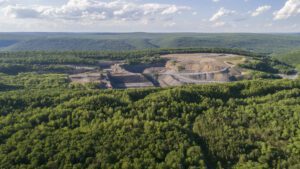By John MacDonald, Subject Matter Expert & Consultant for Mining, Schneider Electric
Mining on the Rebound?
Analysts are divided as to whether we (the mining industry) are at the bottom of the market or simply entering a heightened period of volatility. Well, the Top 40 Miners have suffered a decline of 37% (2015)1 in market capitalization, meaning many are marked below their book values and any gains made during the mining boom have now been effectively, you are right – “wiped out”.
Caught in the crossfire between declining demand for commodities, volatile pricing, and increasing operational costs, many of the mining peers have undertaken significant cost-reduction measures– cutting back on new capital projects, divesting non-core assets, shutting down marginal operation. And now the mining operators are turning their attention to operational excellence, to wring more productivity from their existing assets. As noted by PriceWaterhouseCoopers1, this new productivity initiative is ‘unchartered territory’ for miners, as they bring with them a fundamental change to their assets – people, process, procedures, all for longer-term paybacks.
What’s Next?
Outside of its people, inventory is the most important asset of any mining company. Inventory is most commonly defined as the entire value of materials held by an organization to:
- support production, e.g. raw materials, work in progress
- support activities, e.g. maintenance, consumables
- sell finished goods
As a key indicator of a company’s performance, an accurate and timely understanding of inventory is imperative for any mining operations. When we speak of inventory management, we are talking about the activities employed to maintain the optimum amount of each item- be it raw materials, consumables or finished product. It also covers the quantity and quality of material at any point of time in the supply chain.
The objectives of having visibility into the inventory are:
- it provides uninterrupted production and sales at a minimum cost
- knowing where inventory is located means miners can take advantage of additional sales opportunities should demand increase
Therefore, we can see that having a solid inventory management, not only affects working capital, but also the ability for miners to respond to changing market conditions. Now, don’t we all agreed, that inventory management systems is necessary for businesses to run successfully and efficiently.
Let’s Rethink
McKinsey estimates that by 2025, operational digitization would represent $370B annually in potential unlocked value2. What does it mean to our mining peers? That increase production, or increase profitability, are up for grabs, for those who can overcome the challenges associated with shifting to a data-driven business, as data-driven operations become a reality through connected devices.
In a nutshell, miners who rethink and shift their focus to proactively look inward into its processes, and leverage technology to drive operational excellence, and achieve real-time visibility to their end-to-end value chain across extraction, smelters and furnaces, and onto storage and transportation, will be the winners of tomorrow.
Watch Digital Transformation in Mining Operations webinar, and gain insights on how leading mining companies are adopting technologies to gain real-time visibility into their inventory to reduce losses, improve recovery, maximize throughput, and enable better decision-making to ultimately improve profitability.
Source:
1Mine 2016: Slower, Lower, Weaker but not Defeated, PWC (2016)
1Mine 2017: Stop. Think…Act, PWC (2017)
2How Digital Innovation can Improve Mining Productivity, McKinsey&Company (2015)

